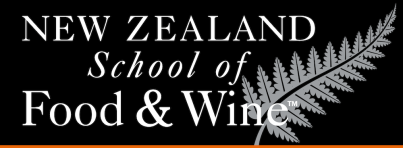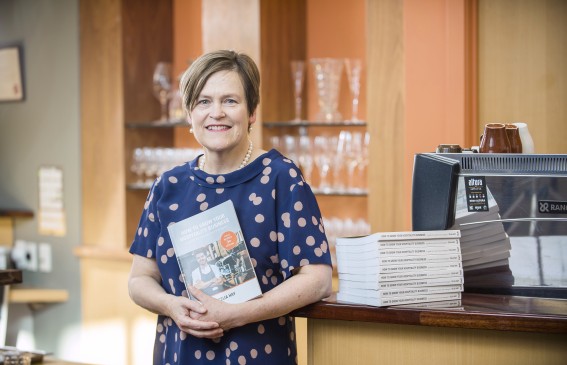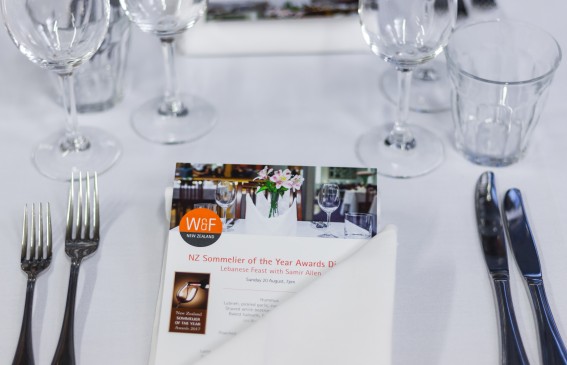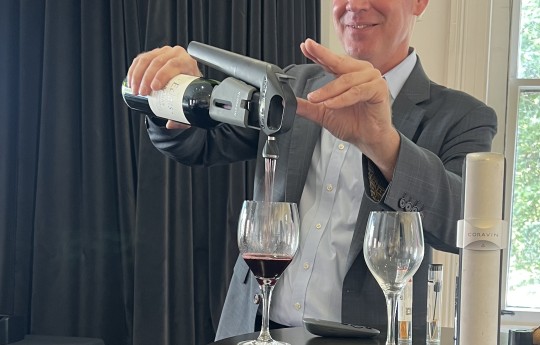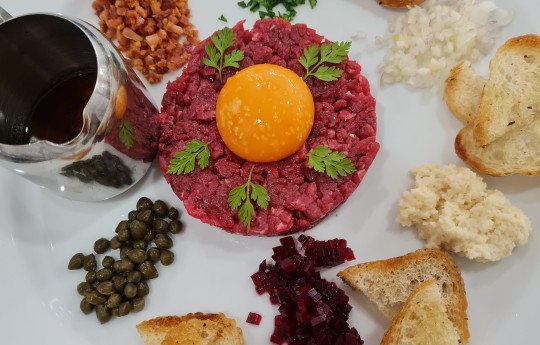Coravin Wine Preservation System demo with inventor Greg Lambrecht
It was so interesting to learn of the development of the Coravin System of wine preservation and to meet its founder and inventor Greg Lambrecht.
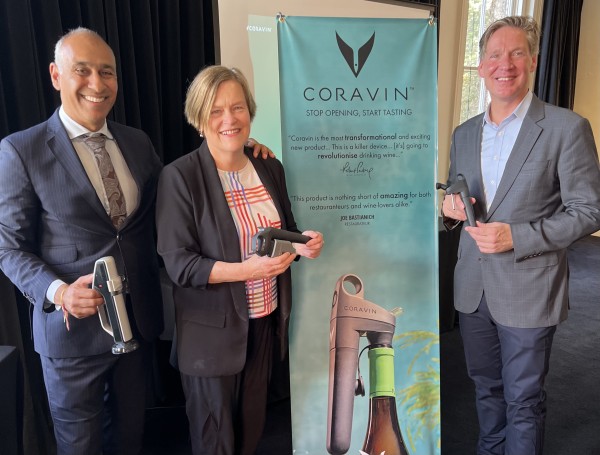
Coravin has revolutionised how we drink wine. It enables us to draw off a glass, store the bottle in a fridge and extract and savour the balance over a number of weeks or months. I first purchased Coravin in 2016 and remember how it transformed the service of wines especially for wine tastings, without pulling the cork. In restaurants, Coravin avoids significant wastage and has expanded the number of wines that can be offered by the glass which is great news for the consumer.
How it works
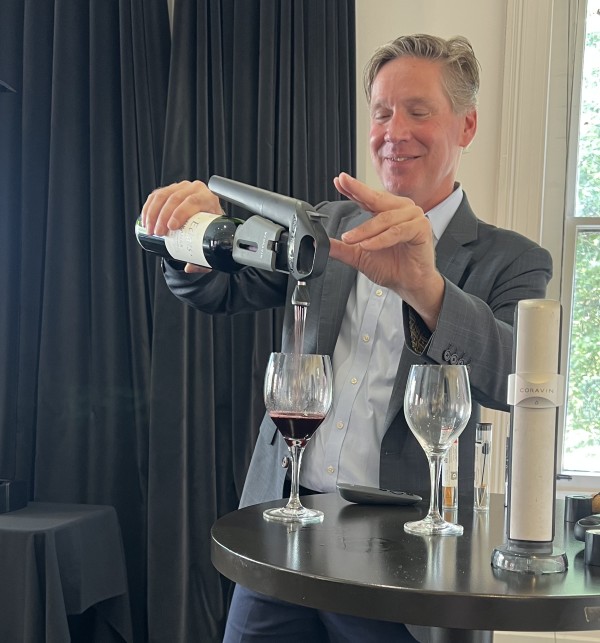
Greg Lambrecht of Coravin demonstrates the Timeless Aerator attached to the spout of the Timeless wine by-the-glass system.
By inserting a needle, that we now know today was invented by Greg for medical purposes, the wine is extracted through the cork. At the same time, the volumn inside the bottle is replaced with a layer of argon gas which prevents oxidation and the deterioration of the wine still left inside the bottle.
Greg Lambrecht has other career as a biomedical engineer and inventor of medical devices; needles, catheters even devices for spiral implants and disc surgery. Finding the balance between two entrepreneurial businesses, has required Greg to step back from the CEO roles and now he is Chairman of both companies. Greg spends many months each year flying around the globe connecting with customers. This was his first Coravin focused visit to New Zealand.
Since Coravin's establishment, Greg has gone on to develop complementary products within the range including a closure for screwcaps to allow the Coravin system to work, sparkling wine system and a fixture that
Comparative Tasting
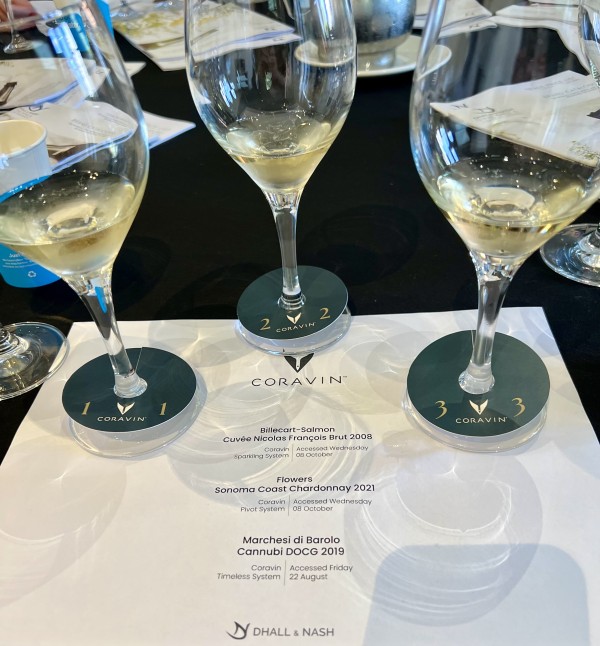
Tasting of Champagne Billecart-Salmon Nicolas Francois 2008, with one bottle opened 10 days ago. Could we taste the difference?
At the presentation, Greg told the story of how he developed the Coravin because his wife was pregnant and he did not want to waste premium wines by opening them and then not being able to finish the bottle.
Greg tested the audience to check if we could tell that wine had been opened under Coravin. With the flight of 3 glasses of Champagne Billecart-Salmon Nicolas Francois 2008, we had to determine which of the 3 glasses had been open 10 days earlier? No one could tell! Everyone agreed that all the glasses where 100% suitable for serving to a customer with no apparent loss of bubbles or aromatics.
We also tasted 3 glasses of Flowers Chardonnay 2021 from Sonoma Coast, California and Marchesi di Barolo Cannubi DOCG 2019 which has been accessed via Coravin in August, nearly 2 months earlier. Both wines tasted great and were completely enjoyable. Greg told us that at his home in Boston, he has a cellar of 4800 wines, resting under Coravin. He invited all of us to visit!
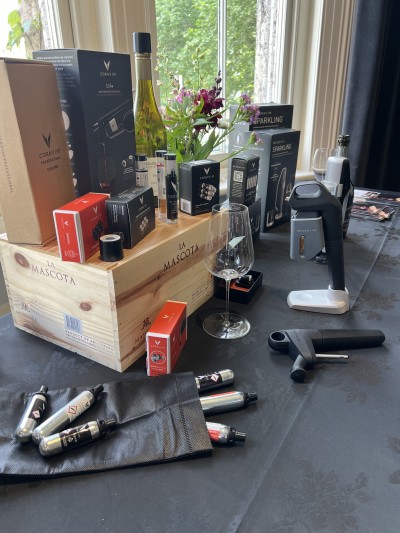
Coravin products on display. |
At the seminar, Greg explained that there are two camps of Coravin users: those that cut off the foil that surrounds the cork, and those that do not.
Greg informed us both methods are correct. Coravin works best with cork and Diam closures but not corks made of sugar-beet or plastic. If you remove the foil, then you can also check if the cork is loose. However, if you have an aged wine, removing the foil may damage a delicate cork.
Greg discussed that most important thing is to store the wine, whether red or white or bubbles in the fridge. He recommends that red and white wines are stored on their side.
Yes, the Coravin system is expensive, however in a restaurant, it prevents an expensive waste of wine if it becomes oxidised.
In the home, Coravin ensures that wine retains its quality once opened and stored in the fridge. In other words, you can extract multiple glasses of wine from a bottle without the risk of oxidation and loss of quality.
Available in NZ through Dhall and Nash.
Celia Hay
18 October 2025
